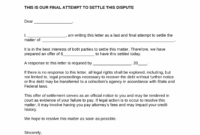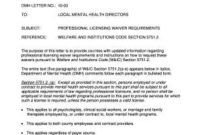Navigating the aftermath of a job change, whether voluntary or not, often involves more than just updating your resume. You might find yourself needing to formally confirm your past employment details for a variety of reasons. Perhaps a new landlord needs verification, a financial institution requires proof for a loan application, or a background check for a future employer needs official documentation of your previous work history. This seemingly small piece of paperwork can be incredibly important, bridging the gap between your verbal statements and official records.
It’s in these moments that having a clear, concise, and professional document confirming your employment status becomes essential. Without a formal letter, proving your work history can become a complicated back-and-forth, costing you precious time and potentially delaying important processes. That’s where a well-structured no longer employed letter template comes in handy, providing a framework to ensure all necessary information is included, making your life a whole lot easier during a transitional period.
Why You Might Need a “No Longer Employed” Letter
There are numerous scenarios where an official confirmation of your past employment becomes a critical document. Think about how many times in life you’re asked for proof of income or stability. While pay stubs and tax documents confirm income, they don’t always clearly state the full dates of employment or the specific role you held. This is where a dedicated letter from your previous employer, or even one you draft for specific purposes, can clarify matters efficiently.
One common use is for securing a new place to live. Landlords often request employment verification to ensure prospective tenants have a stable work history and the means to pay rent. A letter that confirms your start and end dates, along with your position, can quickly satisfy these requirements, helping you move forward with your housing application without delay.
Financial institutions are another major user of such documentation. When applying for a mortgage, car loan, or even certain lines of credit, lenders need a comprehensive picture of your financial background, which includes your employment history. A clear, formal letter can expedite this process, showing them precisely when and where you were employed, contributing to a smoother application.
Furthermore, job applications and background checks frequently require verification of past roles. While your resume lists your experience, many companies will reach out to previous employers or ask for official documentation. Having a ready-made letter or knowing what information to request from your former workplace, often guided by a no longer employed letter template, can streamline this part of the hiring process significantly, ensuring your credentials are fully supported.
Key Information to Include
- Your full legal name and any other names used during employment.
- The full name and address of the former employer.
- Your official job title or position held.
- The exact start date of your employment.
- The exact end date of your employment.
- A brief, neutral statement about the reason for separation (e.g., “resignation,” “end of contract,” “mutual agreement”). This is often optional but can be included if agreed upon.
- Contact information for a person who can verify the employment details, typically within HR or management.
Crafting Your Own Letter: A Step-by-Step Guide and Sample
When you’re putting together a letter confirming you are no longer employed, or if you’re requesting one from a previous employer, clarity and professionalism are paramount. The goal is to provide accurate information in an easy-to-understand format, leaving no room for misinterpretation. Begin by clearly stating the purpose of the letter in the opening paragraph, establishing why the document has been created and what information it aims to convey.
Next, meticulously detail the employment period. This means providing the exact start date and the exact end date. Ambiguity here can cause issues, so ensure these dates are precise. Follow this with your specific job title or titles if you held multiple roles. The more specific and factual you are, the more credible and useful the letter will be for the recipient who is verifying your work history.
While not always necessary, you might choose to include a neutral reason for your departure, such as “resignation” or “end of contract.” However, it is generally advisable to keep this section brief and purely factual, avoiding any lengthy explanations or personal details. The letter’s primary function is to confirm employment dates and roles, not to recount the full story of your departure.
Finally, always include contact information for verification purposes. This is typically the Human Resources department or a designated manager who can confirm the details provided in the letter. Offering this point of contact demonstrates transparency and makes it easier for the requesting party to complete their due diligence, thereby accelerating whatever process you’re involved in, be it a job application or a loan approval.
- Always use a formal and respectful tone throughout the letter.
- Ensure all dates, names, and titles are spelled correctly and are accurate.
- Keep the language concise and focused on factual information.
- Proofread the letter multiple times to catch any grammatical errors or typos.
- Retain a copy of the final, signed letter for your personal records.
Having a reliable document that confirms your past employment status is a powerful tool in various life situations. It not only streamlines administrative processes but also provides peace of mind, knowing that you have official verification to support your claims. Whether you’re seeking new opportunities, applying for housing, or managing financial applications, this simple letter can make a significant difference in how smoothly things progress.
By understanding the key components and knowing how to structure such a document, you empower yourself to navigate transitions with confidence. A well-prepared letter serves as a professional testament to your work history, proving invaluable when you need to formally present your credentials to the world. It’s a small step that yields big results in confirming your professional journey.


